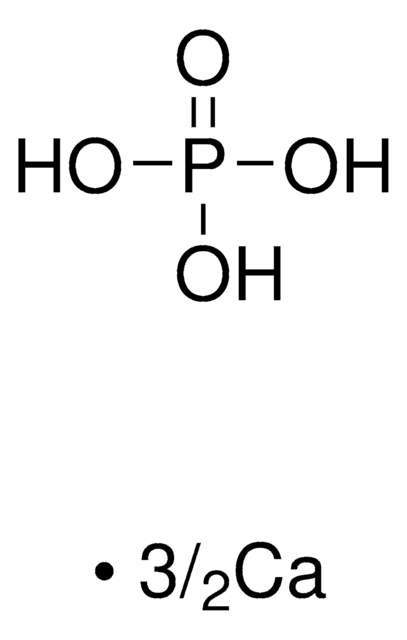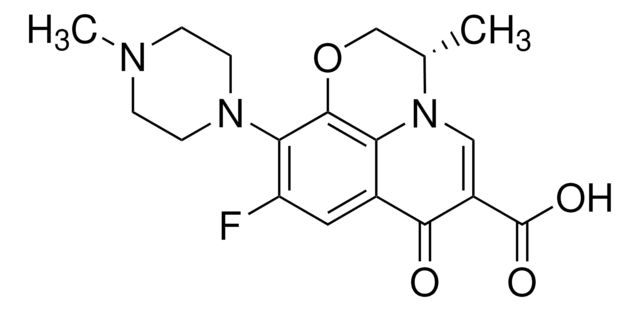Key Documents
49963
β-tri-Calcium phosphate
puriss. p.a., ≥98% β-phase basis (sintered Powder)
Synonim(y):
β-TCP, β-Tricalcium phosphate
About This Item
Polecane produkty
klasa czystości
puriss. p.a.
Poziom jakości
Próba
≥98% β-phase basis (sintered Powder)
Postać
powder
zanieczyszczenia
≤50 mg/kg total heavy metals as lead
≤500 mg/kg total sulfur as SO4 (ICP)
ślady anionów
chloride (Cl-): ≤50 mg/kg
ślady kationów
As: ≤0.5 mg/kg
Ba: ≤20 mg/kg
Cd: ≤1 mg/kg
Co: ≤1 mg/kg
Cr: ≤10 mg/kg
Cu: ≤5 mg/kg
Hg: ≤0.5 mg/kg
Ni: ≤5 mg/kg
Pb: ≤5 mg/kg
Zn: ≤20 mg/kg
InChI
1S/3Ca.2H3O4P/c;;;2*1-5(2,3)4/h;;;2*(H3,1,2,3,4)/q3*+2;;/p-6
Klucz InChI
QORWJWZARLRLPR-UHFFFAOYSA-H
Szukasz podobnych produktów? Odwiedź Przewodnik dotyczący porównywania produktów
Powiązane kategorie
Zastosowanie
- Tungstosilicic Acid: A Promising Electrolyte for Redox Flow Battery.: This study explores the use of tungstosilicic acid (TSA) as an electrolyte in redox flow batteries (RFB). The research highlights TSA′s high energy density due to its multi-electron transfer capability, making it a promising candidate for enhancing the efficiency and power density of RFBs. This advancement is particularly relevant for large-scale energy storage systems integrating renewable energy technologies (Sharma et al., 2023).
- Heterogenization of a Tungstosilicic Acid Catalyst for Esterification of Bio-Oil Model Compound.: This paper explores the heterogenization of tungstosilicic acid by supporting it on silica-based materials for the esterification of bio-oil model compounds. The catalyst shows high activity and stability, indicating its potential for industrial applications in bio-oil upgrading (Prasertpong et al., 2022).
Komentarz do analizy
ß-TCP: >98% ; Hydroxylapatite: <1.0% ; a-TCP: <0%; TTCP: 0%
other Ca-P phases as Calcium pyrophosphate <1.0%
Kod klasy składowania
11 - Combustible Solids
Klasa zagrożenia wodnego (WGK)
WGK 1
Temperatura zapłonu (°F)
Not applicable
Temperatura zapłonu (°C)
Not applicable
Certyfikaty analizy (CoA)
Poszukaj Certyfikaty analizy (CoA), wpisując numer partii/serii produktów. Numery serii i partii można znaleźć na etykiecie produktu po słowach „seria” lub „partia”.
Masz już ten produkt?
Dokumenty związane z niedawno zakupionymi produktami zostały zamieszczone w Bibliotece dokumentów.
Klienci oglądali również te produkty
Nasz zespół naukowców ma doświadczenie we wszystkich obszarach badań, w tym w naukach przyrodniczych, materiałoznawstwie, syntezie chemicznej, chromatografii, analityce i wielu innych dziedzinach.
Skontaktuj się z zespołem ds. pomocy technicznej





